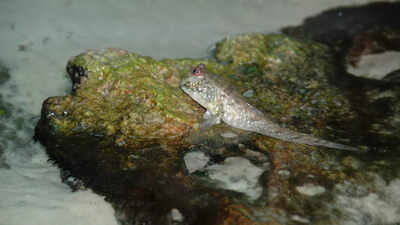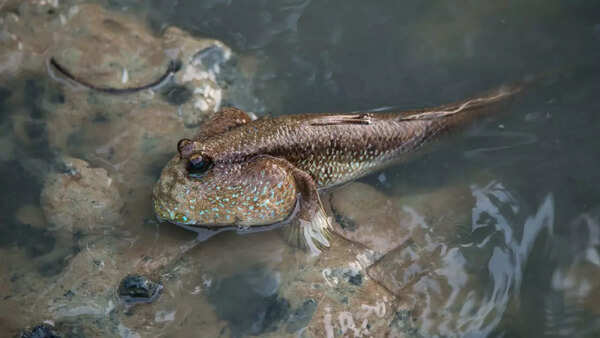ARTICLE AD BOX

Mudskippers, amphibious fish dwelling in mudflats from Africa to South America, possess unique adaptations enabling them to thrive on land. They breathe through their skin and mouth linings, move using their pectoral fins like limbs, and have independently moving eyes atop their heads.
When we think of fish, we imagine creatures that live deep inside the water, swimming with gills and fins in oceans, rivers, or lakes. But nature is often full of surprises, and among these are some fish that challenge the basic traits of these creatures.There is a surprising amphibious species that not only survives outside of water, but lives, breathes, and even walks on land. While this may sound like the plot of a fantasy novel, it's very real. The mudskipper fish found across mudflats and mangroves in regions from Africa to South America is an amphibious creature with quirky eyes, strong fins, and adaptations that help it to live on land.Mudskippers belong to a group of about 25 species that spend over half their lives on land. Unlike typical fish, they live comfortably in muddy environments like swamps, mangroves, and tidal flats, where they eat, mate, and even fight out of water. According to Malcolm S. Gordon, professor emeritus of biology at UCLA, in the journal Introduction to the Special Collection: Revisiting the Vertebrate Invasion of the Land, mudskippers help scientists understand the grand evolutionary leap of vertebrates from water to land.
Each species is different, but they all share unique adaptations that set them apart from aquatic life as we know it.

How do mudskippers breathe on land?
Instead of relying solely on gills, mudskippers breathe through cutaneous respiration, where they absorb oxygen through their moist skin and the lining of their mouths and throats. This means they must stay wet to survive, often flipping in puddles or rolling in mud. They also have a second trick that they trap water in their gill chambers and carry it around.
“They will put their jaws in the water and you can see them pumping water or sucking water in.
.. then puffing out their gill covers,” says Gordon.
How do mudskippers move?
Mudskippers use their pectoral fins like limbs, pushing themselves forward one "step" at a time. These fins have joints similar to shoulders and elbows, giving them exceptional mobility. This isn’t just limited to mudskippers, as their relatives, Gobies, also show similar movements in water.
“Chances are very good... that the way in which mudskippers move... evolved in the water,” Gordon explains. They also use their tails in a move called a C-start to leap across muddy terrain, a behavior that was originally developed for escaping predators.This fish digs deep, complex burrows during low tide, using their mouths to move chunks of mud. These tunnels help them hide, stay cool, or store oxygen bubbles for high tide.
Some even build raised entrances that act as observation posts.
Why are their eyes on top?
Mudskipper eyes sit high on their heads for easy vision and can move independently. They also blink, that is an uncommon and rare behavior among fish. According to Brett Aiello of Seton Hill University, Proceedings of the National Academy of Sciences (2023), “They retract their eyeballs into a skull cavity replete with water.” This helps them stay moist, clean debris, and protect their eyes. “You can produce a very complex multifunctional behavior using this really rudimentary or basic set of anatomy,” Aiello says, showing how evolution can use existing parts for new purposes.

What mudskippers teach us about evolution
Mudskippers are like a living experiment in evolution. Gordon suggests that if environmental collapse clears enough space, creatures like them could one day lead a new land invasion. Photo credits: Canva



.png)
.png)
.png)
















 19 hours ago
5
19 hours ago
5









 English (US) ·
English (US) ·